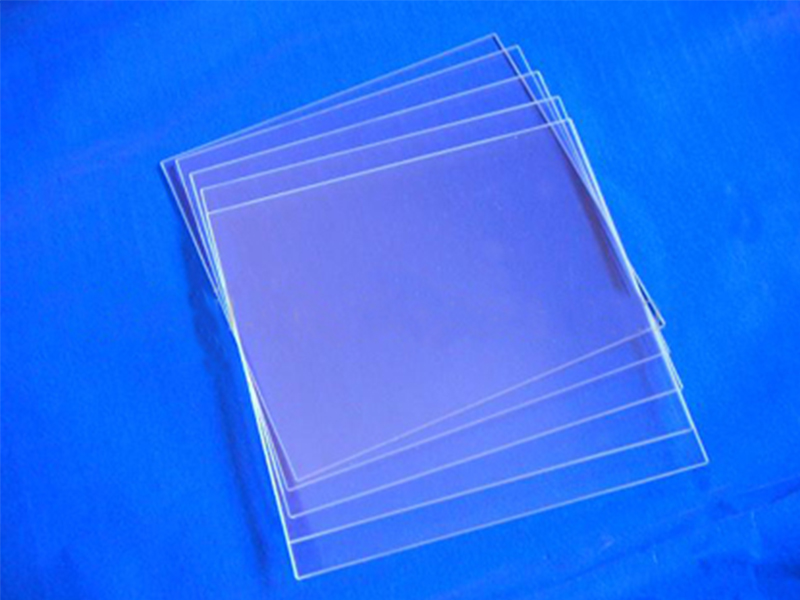Common Sense Knowledge of Toughened Borosilicate Mirror
Click:
-Time:2022-05-18 14:50
1. What is a toughened borosilicate mirror?
Toughened borosilicate mirror is a round borosilicate glass mirror or long strip borosilicate mirror made by physical toughening process. It is suitable for metallurgy, casting, medicine, machinery manufacturing, container, pipeline and other fields. The molecular formula of its main components is SiO2 and B2O3.


2. What are the technical requirements for toughened borosilicate mirrors?
(1) bending strength: not less than 160MPa;
(2) thermal shock resistance: cracks and damages are not allowed when the temperature difference is 230 ℃.
(3) water resistance: meet the requirements of HGB1 in GB / t6582.
(4) alkali resistance: meet the requirements of grade A2 in GB / t6580.
(5) acid resistance: the precipitation amount of Na2O measured according to GB / t6581 shall not exceed 100ug / cm2.
3. What are the common specifications?
The commonly used dimensions of toughened borosilicate mirror are: 100 * 15mm, 100 * 20MM, 130 * 20MM, 140 * 20MM, 165 * 20MM, 168 * 20MM, 180 * 30MM, etc.
4. What are the requirements for packaging, transportation and storage?
(1) packaging
It shall be packed with anti-collision soft materials and protected by appropriate methods. The packing box shall be marked with words such as "fragile", "handle with care" and "do not press".
(2) transportation
During transportation, violent impact and stacking of heavy objects are not allowed, and throwing is strictly prohibited during loading and unloading.
(3) storage
Store flat and straight in a clean room. Soft materials shall not be removed or damaged when not installed.
5. How to install the toughened borosilicate mirror?
During installation, there shall be a cushion between the glass and the metal. The bolts fastening the flange on the glass shall be tightened symmetrically and gradually, and the force is not easy to be too large.
Next:none Pre:Advantages of toughened borosilicate glass
Related articles
- Determination of Chemical Stability of Glass
- What Is Plexiglass and What Are Its Characteristics?
- Advantages of Glass Curtain Wall
- How much do you know about weathering of glass
Recommend
- Common Sense Knowledge of Toughened Borosilicate Mirror
- Advantages of toughened borosilicate glass
- Characteristics of high borosilicate glass
- Thermal Properties and Types of High Temperature Resistant Gl
- Application of flange mirror glass
- Determination of Chemical Stability of Glass
- Factors Affecting the Service Time of High Temperature Resis
- How to Solve the Energy Waste of Glass Curtain Wall
- Main Production Methods of Quartz Glass
- How to Polishing the Mirror Glass
Rank
- Application of high temperature resistant glass
- Precautions in the process of quartz tube cutting and picklin
- ultra-thick tempered sight glass for submarine
- What are the advantages and disadvantages of quartz tube heat
- The process of toughening of borosilicate tempered sight glas
- Where is high pressure resistant glass used?
- Introduction of elliptical quartz tube and oval quartz tube
- Introduction to the Characteristics of Quartz Glass Tube 1
- High temperature boiler sight glass for boiler
- Introduction to cold working process of quartz glass
Latest articles
- Common Sense Knowledge of Toughened Borosilicate Mirror
- Advantages of toughened borosilicate glass
- Characteristics of high borosilicate glass
- Thermal Properties and Types of High Temperature Resistant Gl
- Application of flange mirror glass
- Determination of Chemical Stability of Glass
- Factors Affecting the Service Time of High Temperature Resis
- How to Solve the Energy Waste of Glass Curtain Wall
- Main Production Methods of Quartz Glass
- How to Polishing the Mirror Glass

